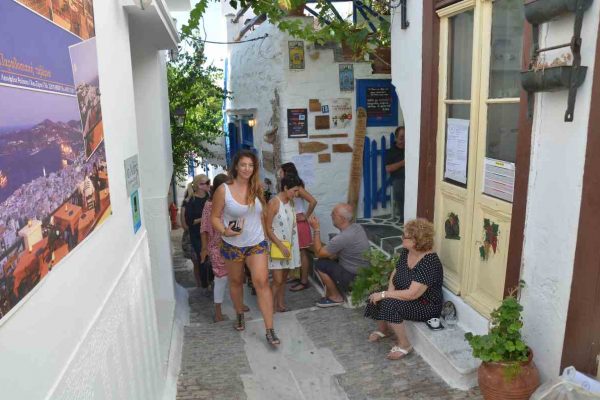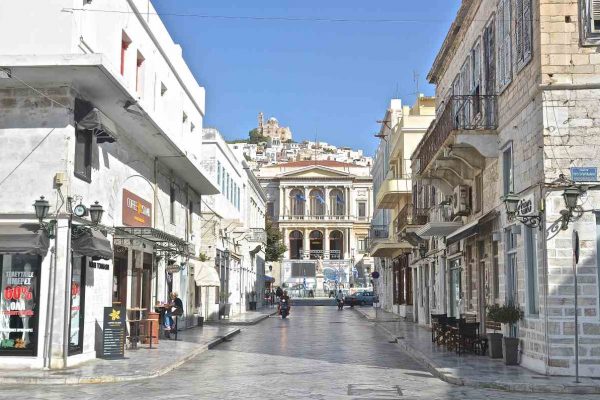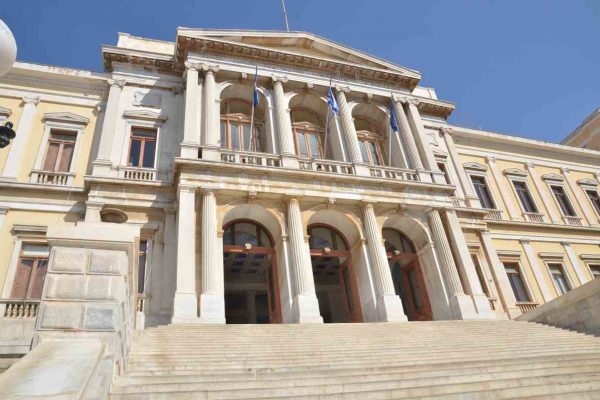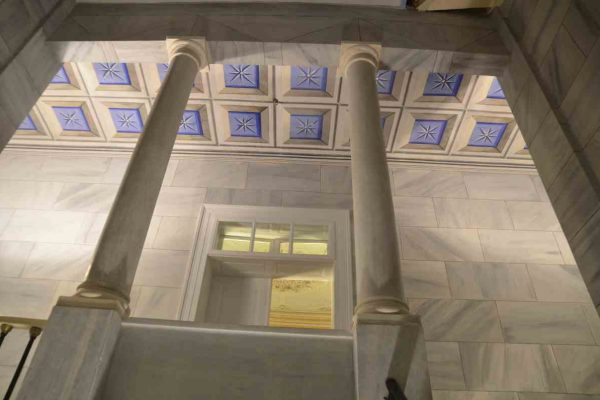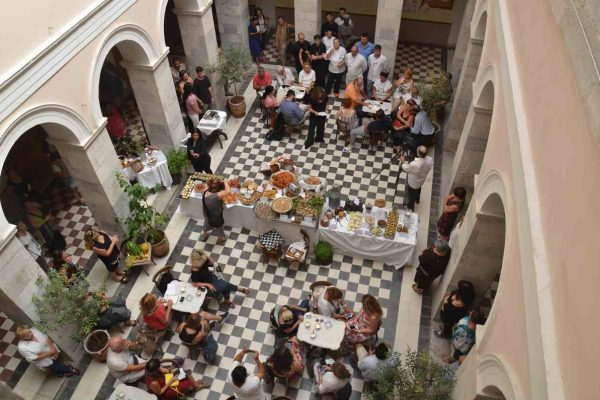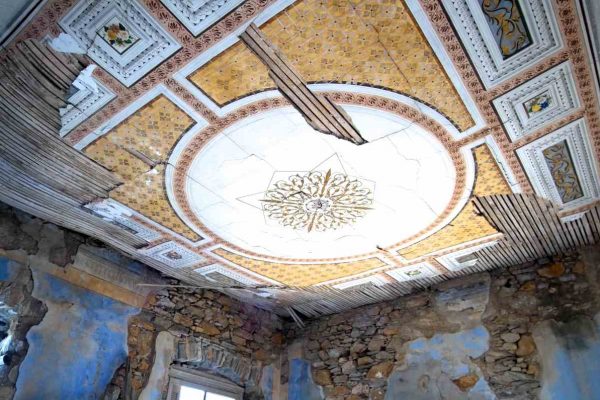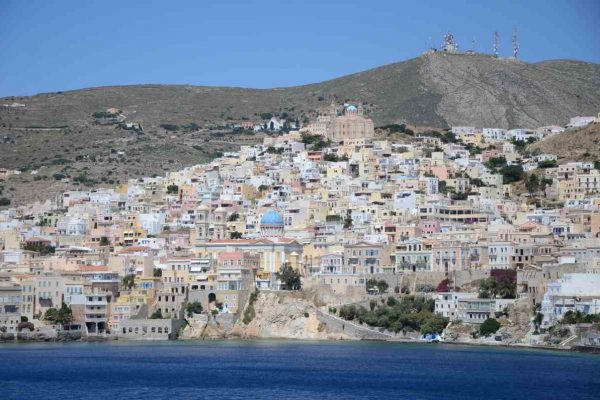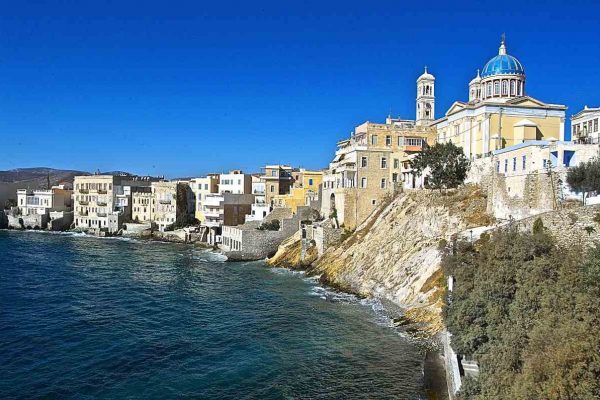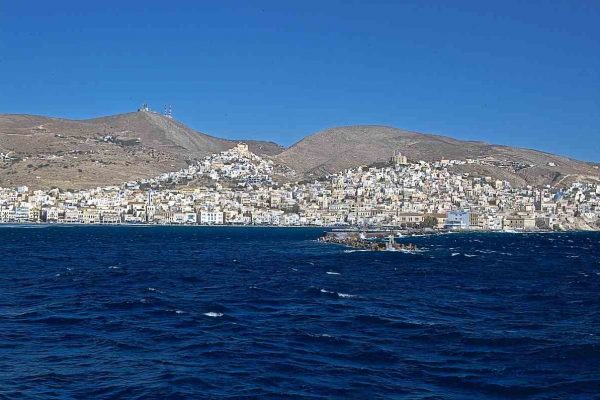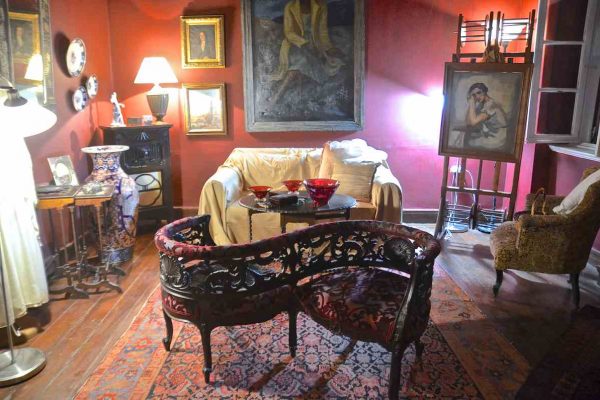
Syra, your upper country with your uphill,
with your many steps and with your Sa-Bastia.
Markos may have left Syra as a young man to go to Piraeus, but he did not forget it, he never forgot his place, the festivals, the festivities and the music of his island and he never missed the opportunity to mention it.
I'll take you back to Finika, Parakopi,
Galissa and Delacracia and let me feel sick.
Around the end of the 18th century the Syros was an island of 6.000 inhabitants - most of whom had embraced the Catholic doctrine - with its capital Ano Syra, perched on the slopes of a hill above the natural harbor. During the outbreak of the Revolution of 1821, Syros, with its Catholic population under the protection of the Franks, maintained a neutral stance.
I have a flame in my heart,
It's as if you made me a Franco-Syrian sweet.
Refugees arrive at this safe haven first from Chios, Psara, Smyrna and then from Istanbul, Crete and the Peloponnese. It is estimated that Syros from 1821 to 1829 welcomes over 8.000 uprooted Greeks due to the liberation struggle.
At the popular assembly of 1826 it was decided to name the new city Ermoupolis, the city of Hermes, the god of trade. Its evolution is rapid. In 1835, more than 2.000 workers worked in its shipyards and 80 ships a year were built, with a capacity of 130.000 tons. The refugee slum of 1823 acquires in 30 years unique urban planning, mansions, imposing neoclassical public buildings, such as the City Hall, which is one of the most beautiful in Greece, work of Ernest Ziller, the municipal theater "Apollo" - miniature of La Scala , customs, merchant navy school.
Syros, the largest port of the new Greek state - thanks to the refugees-settlers, who were already good businessmen, with an extensive trade network around the world-, it then becomes a small Manchester. The first industries that settle on the island are the tanneries, followed by the flour mills, pasta factories, ginners, spinners, weavers, knitters, hat factories. The factories employ hundreds of workers, who either supplement their agricultural and livestock income with a secure wage or come from the Syrian "working proletariat".
Suffering, bitterness, medicines, shipwrecks,
like the rock beaten by the waves of the sea.
In the middle of the 19th century, Ermoupolis became known throughout Europe as the commercial capital of Greece, is almost identical to the country. The European maps in the place of Greece only noted "Sira", with red dot. The "Syra" was listed as a register of ships arriving in Marseille, Lodra, Odessa and the Black Sea ports.
The poet Theophilos Gautier, who visited Syros in the early 19th century, writes:
"The impression was great. Syros is about the navel of Greece, the capital of elegance and nobility. Who would have thought that I would meet such a culture… planted on an Aegean island! ".
However, from the moment the port of Piraeus was developed, especially after the opening of the Corinth Canal, Ermoupolis is slowly losing its strategic importance as a port and is declining as an industrial center. But she never lost her beauty, nobility and radiance. The 45 factories that flourished until the middle of the 20th century may have disappeared and disappeared as businesses, but the magnificent buildings, samples of another era, remain there, waiting to be used again - many mansions are already being converted into hostels and some industrial buildings. exploit - and seal with their presence the current capital of the Cyclades.


